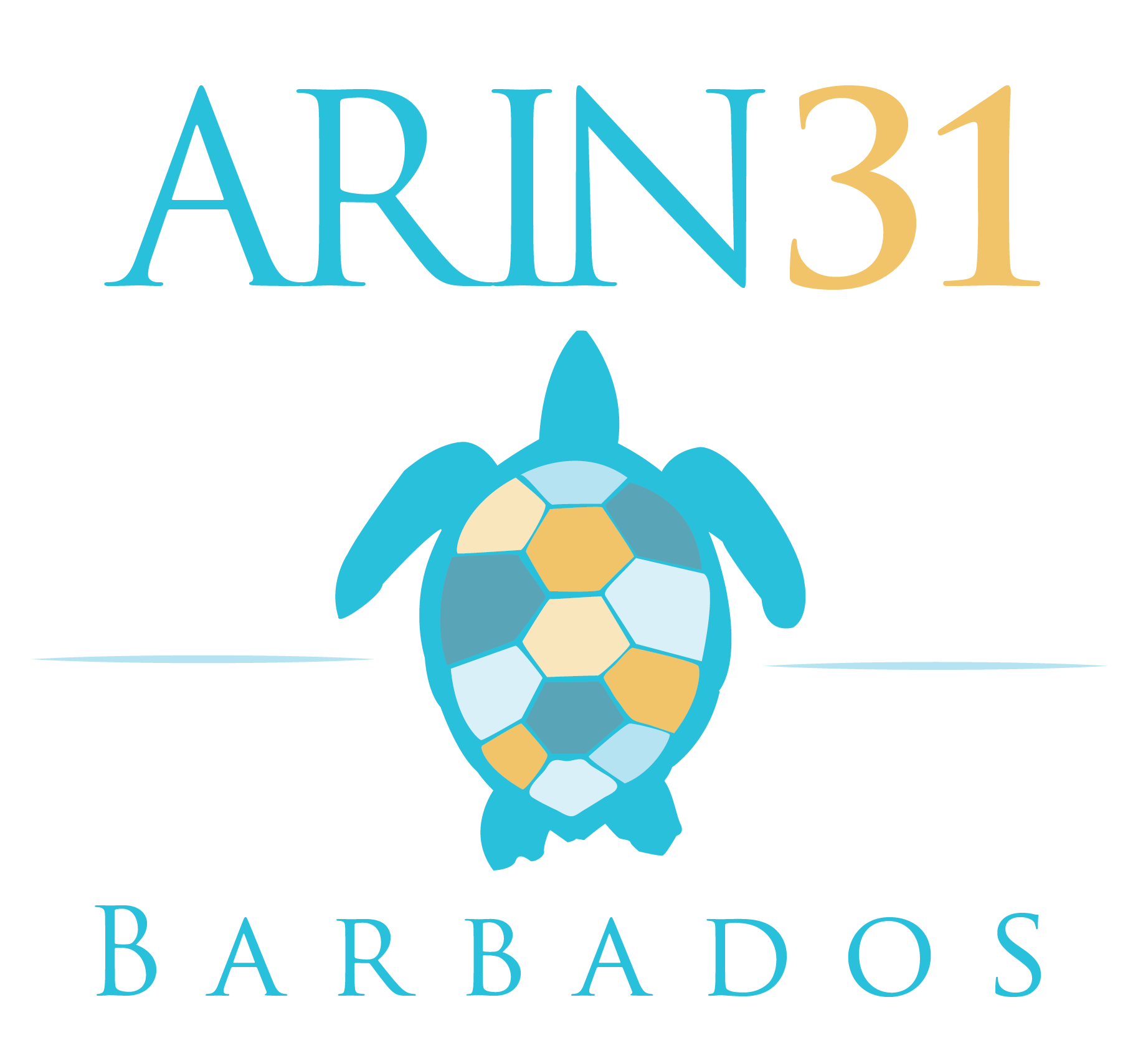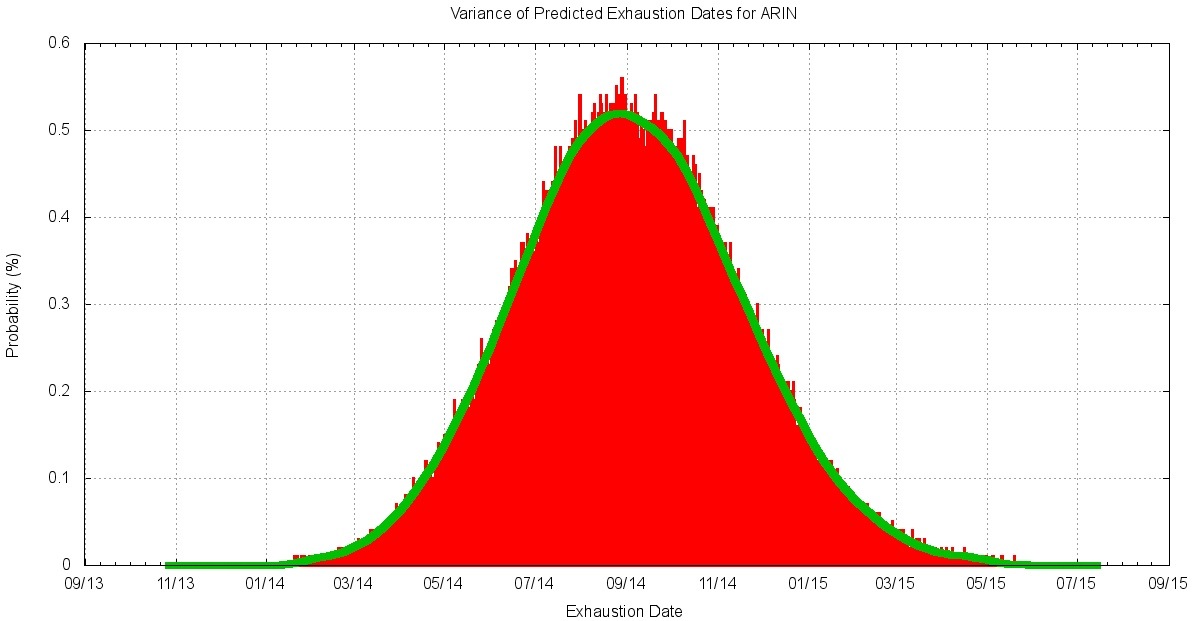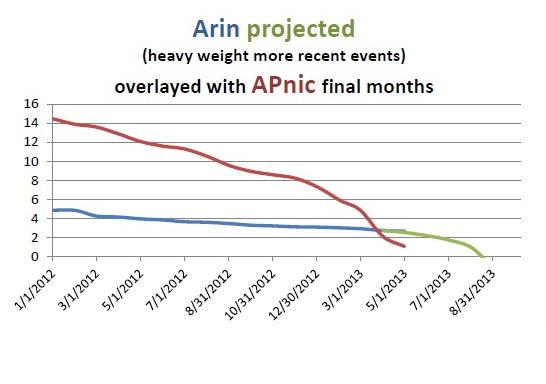Geoff Huston has posted an updated projection on when ARIN will exhaust their IPv4 free pool. While there are numerous caveats around the prediction. His best estimate is sometime in 2014 and likely in the 3rd quarter.
Category Archives: ARIN
July 2013 Update
I’ve been taking some vacation in the past month so the posting has been quiet here. Catching up on news, it does not appear there is a lot of notable news in the IP address arena. However, here are a few links & notes that I’ve found catching up on the happenings in the past couple of weeks.
- RIPE’s “No Need – Post-Depletion Reality Adjustment and Cleanup” proposal (2013-03) was returned to the mailing list and is currently open for additional discussion.
- ARIN is getting very close the the 2 /8 equivalents remaining in their IPv4 free pool. The IPv4 free pool counter currently stands at 2.05. With the crossing of the 2 /8’s threshold ARIN will enter phase 3 of their count down plan.
- The Internet Governance Forum posted a commentary entitled “Secondary market for IPv4 addresses and the lessons of spectrum policy“
- Geoff Huston posted an update on the year since IPv6 launch date, “A year in the life“
New IPv4 runout projections in ARIN region
Tony Hain has produced a new set of IPv4 runout projections for the ARIN region that show the region exhausting its supply of IPv4 addresses by August of 2013. This projection pulls the exhaustion date back from mid-2014.
The increased allocations, according to a number of comments at the ARIN meeting, appear to becoming from hosting companies, registered in the US, which are largely supplying services to end customers which are largely outside of the ARIN region.
ARIN 31 Draft Policy preview and predictions
 The spring ARIN 31 meeting is fast approaching. The final meeting agenda has recently been published. There are also opportunities to participate remotely for those who are unable to make the meeting in person.
The spring ARIN 31 meeting is fast approaching. The final meeting agenda has recently been published. There are also opportunities to participate remotely for those who are unable to make the meeting in person.
Here is my short commentary on the policy proposals being discussed at the meeting. In this blog entry, I’ve also attempted to make some predictions on the discussion and outcome…
2012-2 IPv6 subsequent allocations
Policy Summary: Changes the way utilization is determined for ISPs who return to ARIN for additional IPv6 allocations.
Issues: Since the initial IPv6 policy was implemented, it has been understood that the IPv6 policy would need to be modified as implementation experience was gained. Since the idea of hierarchy is important in IPv6 networks, this policy allows a network’s regions which grow at different speeds to retain the hierarchy structure and still allow fast growing regions to obtain the needed additional IPv6 address space. Since the draft policy’s introduction there was strong consensus that the existing policy needed to change, the challenge has always been the details of policy text.
Prediction: This policy will finally reach consensus at this meeting and will be sent to last-call for approval.
2013-1 Inter-RIR transfers of ASNs
Policy Summary: Allows organizations to request to transfer an autonomous system number (ASN) from one RIR to another.
Issues: ARIN recently adopted policies which both allow the directed transfer of IPv4 between regions and also allowed the directed transfer of ASNs within the ARIN region. This policy extends this trend to allow ASNs to transfer between RIRs. Some stakeholders in general disagree with the idea of allowing IP resources to trade and will likely oppose this policy. On the other side are those who will argue that this policy is a logical extension of the existing policy to allow resources to be transferred to where they are needed.
Prediction: This policy will have signification discussion about the need for the policy and the role of inter-RIR relationships, but I suspect the final consensus at the meeting will be to proceed with the implementation of this draft policy.
2013-2 3GPP IP Resource Policy
Policy Summary: Allows organizations to use a lower utilization requirement for provisioning their 3GPP networks when requesting additional IP addresses.
Issues: Wireless operators have been using space beyond RFC 1918 (such as 1.0.0.0/8) to solve their addressing needs and now that this is becoming part of the “Internet” they need to move off of that space. With ARIN’s /8 inventory currently at approximately 2.5, I’m skeptical that any policy using global IPv4 unicast space can actually solve this problem. The policy text of this draft policy is also not complete at this time and if consensus is achieved on the concepts of the policy change this draft policy would have to return for discussion at another ARIN meeting.
Prediction: This policy will be abandoned by the AC following the meeting.
2013-3 Tiny IPv6 Allocations for ISPs
Policy Summary: Allows ISPs to request smaller than normal IPv6 address blocks or return larger IPv6 blocks to reduce their IPv6 holdings.
Issues: This draft policy addresses an issue where ISPs are being moved into a larger ARIN fee category under the new fee schedule and allows them to return address space to move to a smaller IPv6 fee category. There has been significant discussion on the PPML mailing list about this issue and at this point it seems unclear if this proposal will achieve consensus at the meeting. The primary argument against this policy is that this policy undermines the best current practices for IPv6 subnetting, the intended hierarchical addressing structure defined by the IETF in the IPv6 RFCs, and generous nature of intended IPv6 assignments to end-users. Some stakeholders will argue that ARIN’s fees shouldn’t be used as a force to dictate a network’s IPv6 architecture. Arguments for the policy are that some small ISPs don’t need and never will use the current minimum block size of a /32 or /36 and should be able to get a /48 which meets their network needs.
Prediction: This policy will be sent to last call by the AC following the meeting. (I suspect it is possible that the /48 option will be removed from the draft policy as part of the discussion)
Legacy IPv4 Address standing with USG
ARIN has posted a set of letters and links in response to a letter from the general counsel of the US National Science Foundation (NSF) that was circulated widely on the Internet in the fall of 2012. This letter was previously written about in a blog entry here and the on Internet Governance Project website.
John Curran, the CEO of ARIN, wrote a letter to the general counsel of the NSF in response to the leaked private letter. In the letter, Mr. Curran requested that the NSF revoke its previous letter or clarify the early IP address assignment context of the letter. The letter also goes on the state ARIN’s case for why it believes it should be the registry of record for these legacy IP resource records and why they should be subject to the same community driven stakeholder policy process as IP address assignments made today by the RIRs.
In a letter, dated November 7th, 2012, the general counsel of the NSF responded to Mr. Curran’s letter and stepped back from some of the statements made previously in the earlier private letter. Specifically noting that the NSF does not speak for the USG on the issue of Internet governance, the NTIA is the appropriate government agency to represent the USG in this area, and that the previous letter was a private letter observation on the NSF’s historical role in the development of the Internet.
This response now seems to erode the idea, that some members of the Internet community have posited, the NSF letter endorsed that legacy IP address assignments should be treated more like property rather than a resource licensed for a specific use.
ARIN’s website on their legacy address information page also now notes the following:
On December 3, 2012, the National Telecommunications and Information Administration (“NTIA”) formally commented on the USG’s Internet protocol numbering principles, including that it recognizes ARIN as the RIR for this region. This NTIA guidance is a clear response to the issues raised by an earlier letter from National Science Foundation General Counsel (NSF GC).
NTIA Administrator Lawrence Strickling posted a blog entry on the US Department of Commerce’s NTIA website clarifying the NTIA’s approach to IP addressing in the US. In the blog entry, Mr. Strickling specifically notes that the USG supports the existing multistakeholder model for development of Internet technical standards and processes, that the RIRs “are responsible for developing policies for the use of IP numbers within their respective specific geographic regions,” ARIN is the RIR for the United States, and that the “USG believes that all IP numbers are allocated for use on a needs basis and should be returned to the numbering pool when no longer needed.”
For those, who still believe that legacy IP addresses should be outside of existing RIR framework and not subject the the needs based policies which have been supported by the Internet community for more than a decade, this series of events only appears to further strengthen the case that the legacy IP address assignments should fall under ARIN’s role as the registry of record and that the USG appears prepared to defend that position in the United States.


